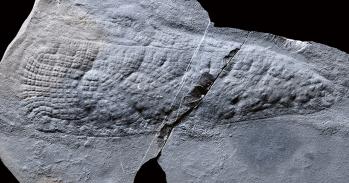
Cambridge anthropologists are increasingly looking at human evolution not just as a path through the remote past, but also as a way to explore humanity today.
Cambridge anthropologists are increasingly looking at human evolution not just as a path through the remote past, but also as a way to explore humanity today.
Understanding how we survived in the past may be a step towards future survival.
Cambridge has a long tradition of research into human evolution. Alfred Haddon, the founder of the Faculty of Archaeology and Anthropology, was one of the first generation of Darwinists who explored the human world through the lens of evolution; Louis Leakey, who opened up the African search for human origins predicted by Charles Darwin, is one of the most notable of Cambridge anthropologists. In recent years, that tradition has been turned from the contributions of scattered individuals to a full institutional commitment. The Leverhulme Centre for Human Evolutionary Studies (LCHES) was founded in 2001 by Dr Marta Mirazón Lahr and Professor Robert Foley to be at the forefront of international research; it reflects both the growing power of evolutionary science and the endless fascination with the origins and nature of our own species.
Fossils, tools, apes and genes
When we think of human evolution and how it is researched, a number of images come to mind. One might be some African desert, yielding rare fossils of our ancestors. Another might be an archaeologist, digging up the earliest evidence for complex tools. In another direction lies the study of living apes, whose behaviour can provide clues about ancestral forms. More recently, the use of genetics has become more visible, with patterns of contemporary genetic diversity throwing light on evolutionary patterns in the past. Genes are now even being extracted from fossils, to add to the evidence. And, finally, we can even think of the ways in which anthropologists and psychologists, studying people today, can make inferences about evolutionary history and processes, and ultimately about human nature. LCHES was designed to bring all of these together.
Understanding humans is a question of evolution
A multidisciplinary institution has to be more than the sum of its subjects. At the heart of LCHES is the simple idea that research should be question-driven. Different questions require different techniques and methods and, in particular, combinations of approaches. For example, we can ask where and when modern humans evolved, and evolutionary genetics can indicate Eastern Africa as the most probable location. But it is only by integrating these predictions with the exploration for fossils and archaeology in places such as northern Kenya that research can both give substance to the genetics and provide an understanding of why we evolved there.
The aim of the Centre is to act as the means by which researchers from a wide breadth of disciplines – anthropology, archaeology, linguistics, genetics, psychology, zoology and evolutionary aspects of geography – can formulate and develop joint research programmes. This has led, for instance, to an exploration in India, Papua New Guinea and the Solomon Islands of how genetic diversity can be shaped by language barriers and thus influence evolutionary history. Finding out how humans have come to vary so much in size has brought together anthropologists studying hunter-gatherers in the Philippines with evolutionary theoreticians who are unravelling the biology of size and demography. Geneticists are searching for the underlying genetics of size and shape, while anthropologists are searching the museums of the world for skeletons that can track this in the past. And understanding how humans became dependent upon culture has led to archaeologists working with living apes to see how they use and exploit technology.
Evolution naturally makes one think of the past, but that evolutionary past lives on in us today. Understanding how we survived in the past may be a step towards future survival.
For more information, please contact the authors Professor Robert Foley (r.foley@human-evol.cam.ac.uk) and Dr Marta Mirazón Lahr (m.mirazon-lahr@human-evol.cam.ac.uk) at the Leverhulme Centre for Human Evolutionary Studies. External funding for the Centre has come from the Leverhulme Trust, the Wellcome Trust and Cambridge in America.
This work is licensed under a Creative Commons Licence. If you use this content on your site please link back to this page.





